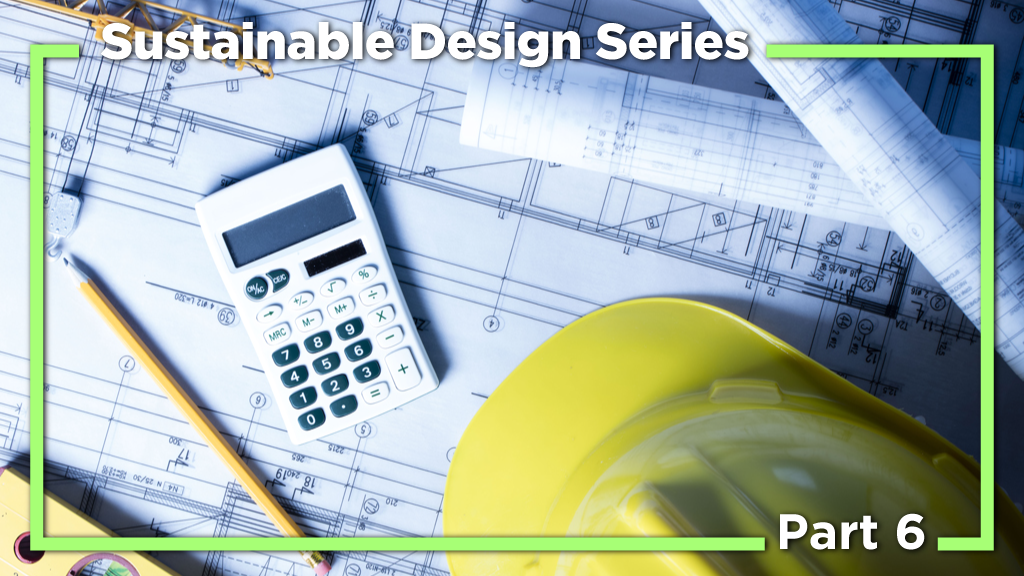Once the contractor receives the architects/engineers’ final design, they naturally want to ensure a profitable job, meet the schedule and budget, and deliver quality that will secure them the construction completion certificate.
Construction is a very conservative industry, with overweight delivery and completion risk and razor thin profit margins. The potential upside of innovating onsite is heavily outweighed by the downside risk of missing the deadline or budget. A poorly run project will not only harm a contractor’s reputation, but liquidated damages and performance penalties can destroy their balance sheet and future bonding capabilities.
The contractor may resolve design issues onsite if it is in their interest to do so, less so the client’s interests. And contractors, also creatures of habit, prefer to buy products they know from suppliers they’ve dealt with before and install them in a way they are familiar with. A new supplier or updated techniques will take time to make their way into the contractor’s repertoire.
And specifications may list specific suppliers or “equivalent,” giving the contractor flexibility in equipment selection and so many choose less efficient substitutes, or over/undersize components (e.g. chillers, pumps), or choose location for products that are not ideal (e.g. sensors). Contractors, in some cases, exposed to a previous project’s losses, are keen to squeeze out some additional margin on current projects and do everything possible to keep the work moving to ensure steady cash flows.
Contractors possess tremendous practical engineering knowledge and while those capabilities could have a major impact on a building’s energy efficiency, their contractual reward structure disincentivizes them from attaching importance to how well the building operates after construction is complete. Plus, to be fair, unless it is a design-build project, it is not really their job to optimize the design. They are paid to build, not to upgrade the engineer’s work. Design-build is becoming more prevalent, representing more than 40 per cent of U.S. construction projects (but still lagging in Canada), as it has a demonstrated ability to deliver projects faster and cheaper and with no reduction in quality.
In many cases, the designers are busy working on new projects and won’t have sufficient time to check every as-built drawing received from the contractor to compare with their design drawings. The designers are not rewarded for improving performance after the design is complete but focus on minimizing changes (i.e. cost to their firm). And the site construction manager, representing the owner and designer, is normally not fully familiar with the nuances of the design and has a more practical site perspective. They are more geared to ensuring there are no schedule delays, so will let many seemingly non-critical onsite changes pass rather than be blamed for causing the delay.
It is also very normal on a project for the contractor to take more time ramping up early in the construction schedule, when a distant project deadline seems non-threatening. So by the time we get into electro-mechanical installations there’s a mad rush with the interiors finishing team raring to get started and meet the ever tight deadline. And once the “guts” of the project (the structure, the mechanicals, electricals) are installed and covered up by the finishes, all can breathe a sigh of relief.
As a very conservative industry, with fixed budgets/schedules and liquidated damages, contractors prefer to conform to issued designs (even if they can be improved) and discourage change, even if it is to the client’s long-term benefit. Contractors, heavily influenced by organized union labour, also prefer to stick to traditional contracting methods (e.g. in-situ concrete, conventional HVAC, etc.), and getting them to switch to more updated techniques (precast modular construction, thermal mass HVAC) will face stiff resistance.
When exposed to new technologies, most contractors would typically — almost reflexively — presume that the innovation is complicated and so more expensive and time-consuming.
What they are really thinking/saying is that a new technique carries unknown risks with possible schedule and budget impacts. It is difficult to change their viewpoints from risk of loss to potential of profit. This step must be first taken by the more confident leading-edge contractors working for confident leading-edge developers, before the mainstream players follow suit, a process taking decades, not years, before it becomes mainstream.
Once contractors open up to the potential of the new technology, they will realize they have the existing skills and capabilities to execute these “new” technologies, which one day will become the entrenched norm and that contractors will cling to until the next innovation arrives and the cycle then repeats itself.
This op-ed is the sixth in a series from Eco-Structures International’s founder and director Ghassan Nimry which focuses on innovative sustainable engineering solutions to today’s climate change problems. He believes that technology can solve many of today’s seemingly intractable problems, but to make it work we need collective work, personal acknowledgement of our role in the problem and our ability to be part of the solution. Send comments to editor@dailycommercialnews.com.











Recent Comments
comments for this post are closed